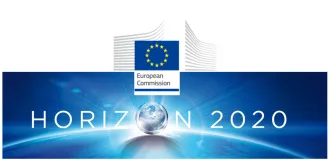O2GEN
Relevant project information
Dates
Project website
Role of CIRCE
Grant agreement number
Funded by

Description and objectives
The oxy-combustion process is based on the combustion of coal in a controlled atmosphere of pure oxygen, resulting in a gas stream consisting of CO2 and water vapor. By condensing the latter, the resulting product becomes exclusively CO2. Once the CO2 is separated, it can be used in various applications that are being investigated internationally, or it can be injected into the subsoil avoiding its emission into the atmosphere.
The demonstration of the second generation of oxy-combustion based technologies to be carried out at O2GEN will comprise 4 major phases:
- Identification of existing inefficiencies in the first generation of oxyfuel technologies, and collection of useful data to be applied in the new generation of thermal power plants.
- Optimization and demonstration of each sub-process, and of the different equipment and components that integrated the first generation oxy-fuel technologies, such as the Air Separation Unit (ASU), the boiler and the gas recirculation system or the CO2 purification and compression system.
- Process integration.
- Optimization of oxy-fuel combustion process with CCS and elaboration of conclusions for its implementation in thermal power plants.
Value proposition
To validate the new models, laboratory-scale tests will be carried out at VTT's facilities, as well as at CIUDEN's pilot plants at its facilities in Leon.The O2GEN project will demonstrate the second generation of thermal power plants based on oxy-combustion technologies. This process allows to reduce considerably (about 50%) the energy penalty produced in thermal power plants when incorporating conventional CO2 storage and capture systems (from 12 points approximately to 6).
In this way, O2GEN will contribute to the European energy objectives set in the SET-Plan by reducing the level of greenhouse gas emissions by 90%, using renewable energies (biomass) in combustion by around 20%, and increasing the energy efficiency of CCS systems by 50%.
CIRCE will be in charge of the coordination and supervision of the project during its three years of execution, to facilitate communication between the partners and ensure that the development of the tasks meets the planned deadlines. It will also carry out simulation tasks to identify inefficiencies and possible improvements in the first generation oxy-fuel systems. It will participate in the design of new equipment as well as in the integration and optimization of processes. Finally, he will be in charge of the dissemination and exploitation of O2GEN results. He will ensure the maximum impact of the project, as well as the development of an appropriate structure to ensure the continuity of the project after its completion.
Project partners
VTT, CIRCE, FWEOY, AIR LIQUIDE, INERCO, ENDESA, CSM, SUT, LUT, USEV, CIUDEN.


